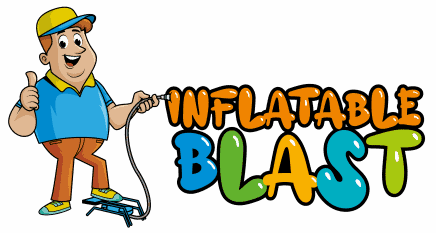Inflatable paddle boards have definitely become a very popular choice for a number of reasons. But have they completely taken over the paddle board market? Can you still get hard boards, or is inflatable the future? Let’s take a look.
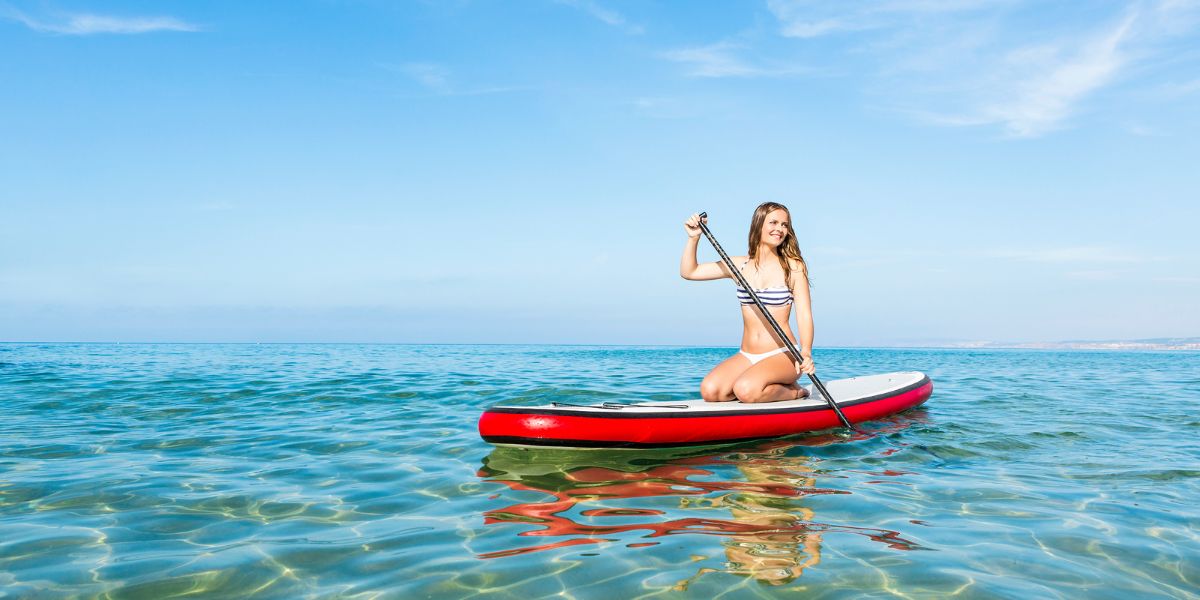
Are All Paddle Boards Inflatable?
Not all paddle boards are inflatable. While they are growing in popularity due to their suitability for beginners, there are still many who prefer a hard board, especially for professionals as they offer better performance.
Inflatable paddle boards, also known as iSUPs, are a recent innovation in the paddling world as they were only introduced in 2008 with Red Paddle Co at the forefront.
Until then, paddleboarding was dominated by hard boards, which were used by big wave riders to propel themselves onto waves.
Inflatable paddleboards are considered an evolution in the paddleboarding universe as they tackle some of the common downsides of a hard board.
For instance, while the traditional paddleboards effectively tackle big waves and racing, they are also fragile and cumbersome, especially when it comes to transporting and storage. This makes them quite impractical for beginner paddlers.
Inflatable paddle boards are more convenient and practical, especially for new paddlers. Even so, traditional paddleboards are still widely used, more so by professionals.
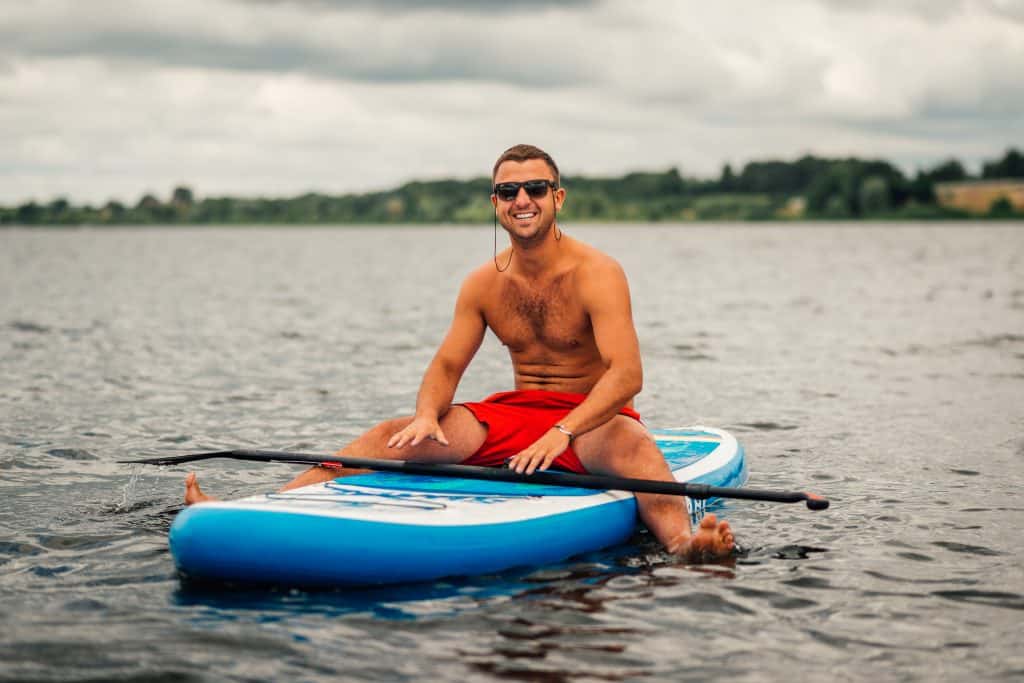
Inflatable Vs. Non-Inflatable Paddleboards
There are many differences between inflatable and non-inflatable paddleboards, beyond the obvious that one is solid and the other is made from an inflatable material consisting of layers of polyester fabric.
Paddleboard Construction
The majority of hard paddleboards are made with fiberglass and epoxy resin layers that are laid on top of hollow wood or foam cores.
The high-end, more expensive ones are made of carbon fiber that is laid on foam cores. As for the more basic and inexpensive hard paddleboards, they are made of just foam. The fiberglass and resin make the board waterproof, strong, and durable. These materials make the traditional paddleboard heavier and more rigid than iSUPs.
Inflatable paddleboards are constructed by drop stitching two layers of polyester fabrics using numerous polyester threads.
An airtight coat then covers both surfaces of the polyester material, and wide-seam tape is glued over the seams so that the board is completely airtight. The result is a light and flexible paddleboard.
Performance Of Inflatable Paddleboards
Hard paddle boards offer better performance compared to inflatable ones. They catch waves better, are more agile, faster, and have better glide.
This is why they’re more popular with professional SUP surfers than inflatable ones. Furthermore, if you plan to do SUP racing or long-distance paddling, hard paddleboards are the better choice, as they’re also faster than inflatable options.
However, hard paddleboards can be difficult for beginners as they’re quite heavy and cumbersome. Inflatable paddle boards are easier to maneuver but can only be used in calm waters unless you’re particularly skilled.
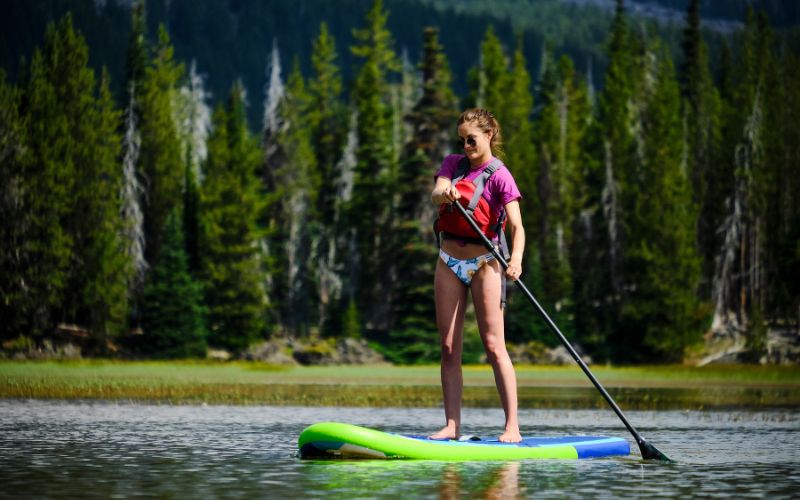
Portability
An inflatable paddle board is much more portable than a hard one. An iSUP is very easy to transport as it is lightweight and can roll up to the size of a sleeping bag when deflated. You can easily fit it in a backpack or a carrier bag when traveling by air.
One of the best perks of an inflatable board is that you aren’t required to pay airline surfboard fees like you would be with a hard board, so you can take it on many more adventures without the extensive costs.
To transport a traditional paddleboard, you would require a van, an SUV, or a large truck to fit it in since you can’t fold it to take up less space. They’re also quite heavy to carry on your own, so you may need help to move it to and from the water.
The only downside to an inflatable SUP is that you would have to inflate it every time you go paddling and deflate it when you’re done. You should also make sure it’s dry before you pack it away, otherwise, the moisture could develop into mold.

Durability
Hard paddle boards are made with fragile materials that can easily get damaged if they fall by accident. At the very least, the board will get a scratch, and in more serious scenarios, it could break. More often than not, a hard paddleboard will require immediate repairing if you drop it.
Inflatables are, surprisingly, more durable as they do not attain any damage when they fall or get hit by something hard. For this reason, they are more suitable for paddling in white water or rocky places.
Suggested read: Do Inflatable Paddle Boards Pop?

Cost
A hard paddleboard will cost more than an inflatable board – provided you buy a good one. This is because non-inflatables are not only constructed with expensive materials but also incur high transportation costs.
Inflatables cost less because they are made with less and cheaper materials – layers of polyester. A good inflatable isn’t made using ‘cheap’ materials though. They’re cheaper than a hard board, but still high quality.
They’re also a lot easier to transport, which brings down shipping costs. If you’re a beginner on a budget, the inflatable paddle board would be the perfect choice for you.
There will be some cheap hard paddle boards you could buy for less than a good inflatable one, but I wouldn’t trust them on the water for long.
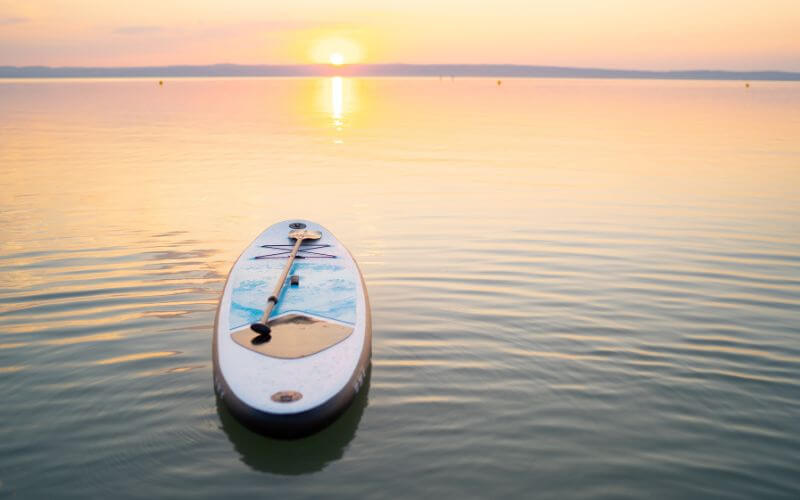
Storage Space
Naturally, an inflatable paddleboard will occupy less space as it can be deflated for storage. It’s the perfect choice if you have limited room in your home. You can store it anywhere, including a drawer.
A hard paddleboard would require more space as it is bigger and heavier.
You would need a storage area that can support its weight and has enough space not to squeeze it with other items. Thus, it would need plenty of clearance room to maneuver the board, especially when storing it and taking it out. Ideally, a garage would be the most suitable place to store a hardboard.
Scenarios Where an Inflatable Paddleboard Is Better Than a Hard Paddleboard
There are a few situations when an inflatable paddleboard is more suitable than a hard board.
Number one is when you’re traveling long distances, especially if you’re flying. Being able to carry a paddle board inside a rucksack is so much easier than checking a hard paddle board, and hoping that it is looked after properly.
Inflatables are also great for beginners as they’re lightweight and pretty easy to control. They’re also pretty resistant to accidents that may occur when a beginner makes a rookie mistake. They’re ideal if you’re looking to build up your confidence on a paddle board before progressing to a hard board.
If you want to go paddling near rocks or white waters, iSUPs are the best bet as they are built to withstand minor impact. Instead of getting scratched or breaking, as would be the case with epoxy paddleboards, an iSUP would bounce off most rocks and other hard surfaces.
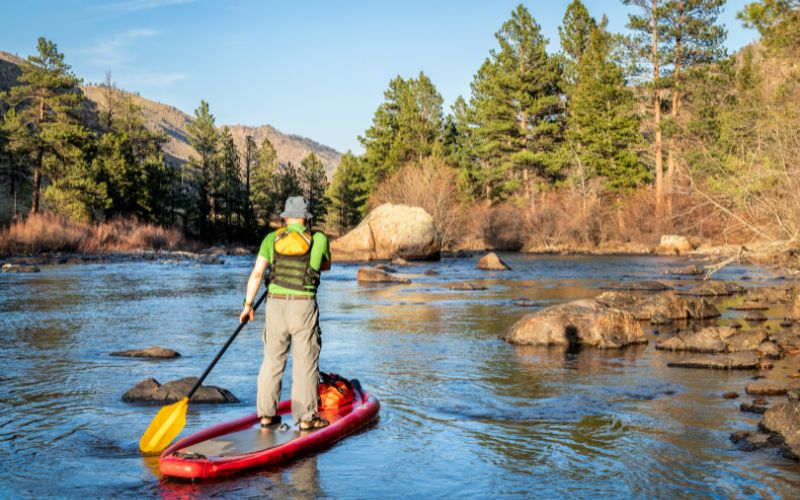
Additionally, inflatable paddleboards are more suitable for paddlers who like exploring off-road places and have to carry their board by hand when walking to and from the water.
Finally, if you’re on a budget, then an inflatable paddle board makes more sense too, since you can get a quality one for less.
Scenarios Where a Hard Paddleboard Is Better Than an Inflatable Paddleboard
Most paddling experts prefer hardboards to inflatables.
Hard paddleboards catch waves much better and boast world-class agility. When someone becomes experienced at paddling, they can paddle into deeper waters where the waves are much bigger, something you can’t do with inflatable ones.
Plus, they’re a lot faster. So whether you’re racing or just want a more exhilarating experience, a hard board will be a better choice.
And while storage and transport can be an issue, if you already have a garage at home and you’ve got a van that can fit a paddleboard, then there’s nothing to worry about.
Different Types of Paddleboards
Beyond inflatable and hard paddle boards, there are a few other types that you need to think about.
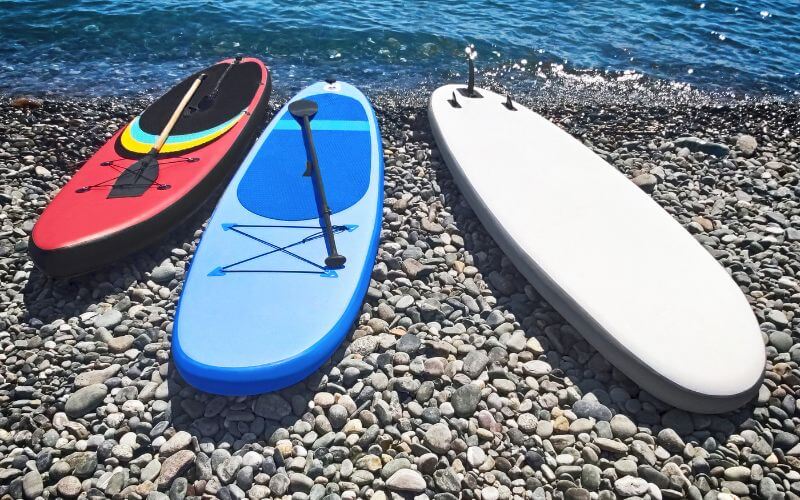
All-Around Paddle Boards
These paddleboards can be used for a wide range of activities by beginners and experienced paddlers alike. Due to their versatility, they’re the most popular type of paddleboard. They range between 9ft and 11ft in length, and they perform well in many different conditions. These could be inflatable or hard paddleboards.
Racing Paddle Boards
These are designed specifically for racing. They’re long, slender, and stiff. Most measure more than 12ft to offer better track and to keep in a straight line.
The stiffness is to ensure that you get the most out of every stroke you make. They are slender to cut through surface resistance efficiently and reduce the drag effect to deliver maximum speed.
You can actually get inflatable racing paddle boards, but hard ones perform better.
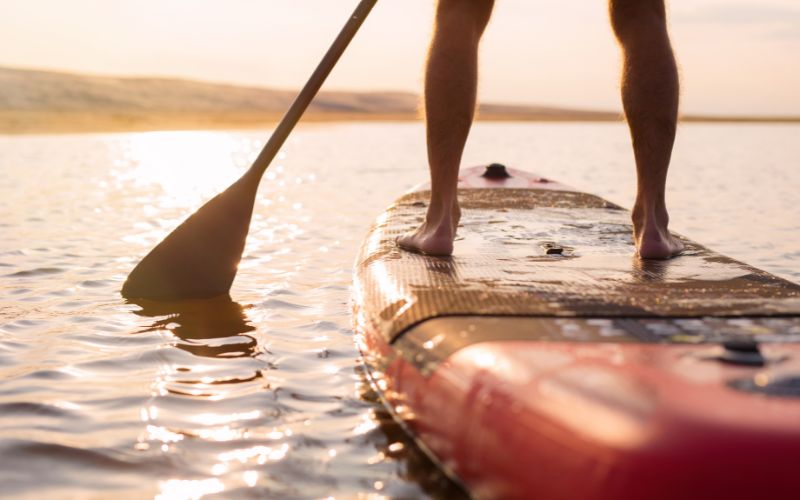
Yoga Paddle Boards
These are made for those people who like practising yoga in water. The yoga paddleboards are stable, and have a wide surface and a full-length deck to provide a sufficient platform to perform yoga positions.
They are thicker than other types of paddleboards for increased stiffness and for the surface to be high above the water. They’re very specialist, so avoid buying these unless you only want them for yoga. They tend to be hard boards only.
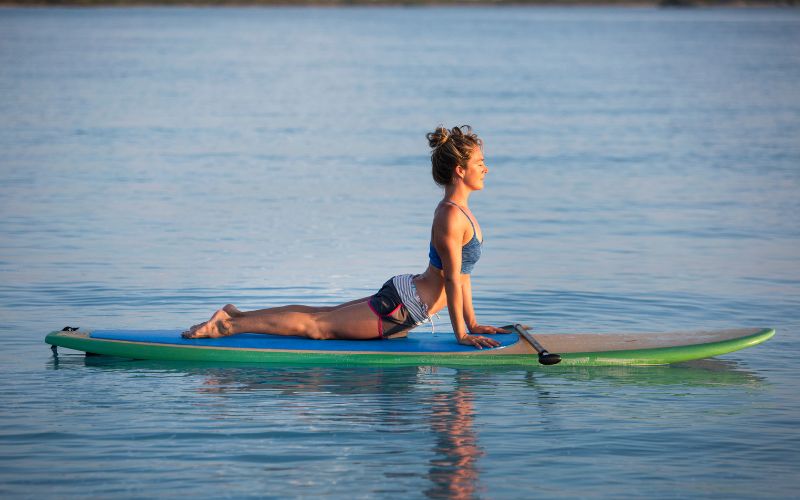
White Waters Paddle Boards
These boards are built with high sides and progressive rockers so that they’re able to break in and out of white waters. They’re light and nimble, but also durable to withstand collisions.
Often, white water SUPs have a broad mid-section and pointed ends. They usually have short flexible fins to facilitate riding in rough water. Most white water paddleboards are inflatables.
Touring Paddle Boards
Touring SUPs are made for long trips in the water. They’re built in such a way that they can be loaded with things you’ll need for your trip. These paddleboards have a long waterline to enhance speed. They also have runner fins to improve tracking and reduce lateral drifting. They’re suited for the more experienced paddlers, and non-inflatable paddle boards are the best choice.
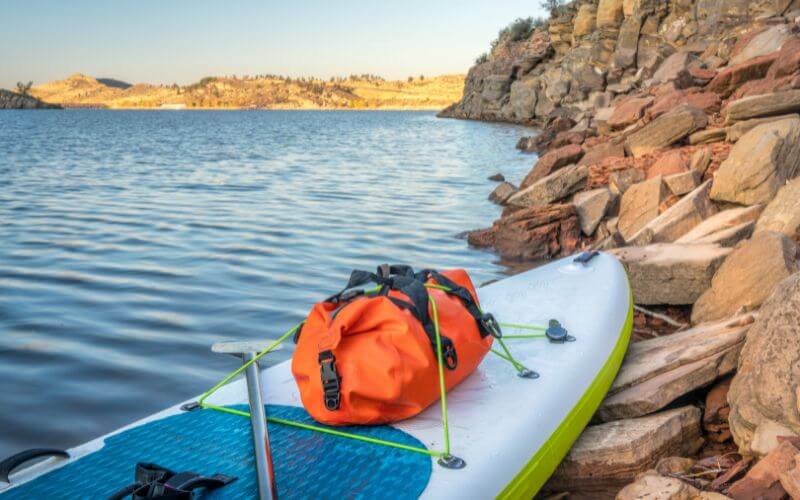
Dog-Friendly Paddleboards
Dog-friendly inflatable paddle boards are specially designed to withstand the wear and tear of having a dog on board. These boards are typically made from more durable materials and have extra layers of material to prevent punctures from dog claws.
In addition to being more durable, dog-friendly paddle boards often have a wider and more stable design that helps keep both you and your furry friend on the board without falling in the water. They may also have a non-slip surface that provides better traction for your dog’s paws, making it easier for them to stay balanced on the board.

Final Words
If you’re a beginner looking for your first paddleboard, then I’d definitely suggest an inflatable one. They’re cheaper and they’re better for getting used to paddleboarding in general, before you potentially upgrade in future.
While you won’t get the exact same experience as you would with a hard board, you’ll at least find them easier to use – meaning you’re less likely to be put off if it takes you a while to learn the ropes!
